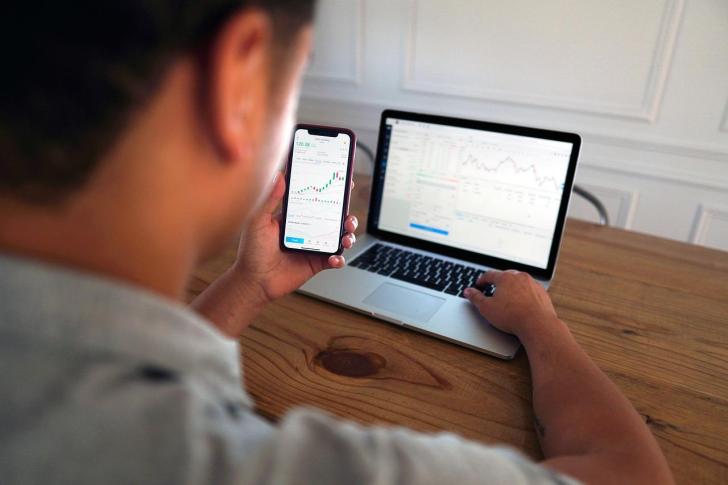Doji Candle: Understanding Its Role in Trading

By accurately interpreting the Doji candle, traders can identify potential turning points in price trends, improving their chances of making informed decisions. Recognizing its significance enables you to respond effectively to shifts in market momentum, making it an essential tool in technical analysis.
This article will delve deeply into the concept of the doji candlestick, guiding you on how to spot it and apply it effectively in trading. We will cover different forms of Doji candles, their implications, and practical strategies for their use.
A Doji candle is a unique candlestick pattern that materializes when an asset's opening and closing prices are virtually identical, resulting in a minimal or non-existent body. This formation reflects a temporary deadlock between buyers and sellers, suggesting that the market hasn't decided on a definitive direction. The Doji's appearance resembles a cross, signifying that there was little movement in the price from start to finish.
This candlestick's significance lies in its ability to serve as a potential signal for upcoming shifts in market momentum. It acts as a reflection of market indecision, often hinting at possible reversals or continuation patterns. As such, experienced traders view the Doji candle as an early warning sign of potential changes in trend direction.
The Doji candle isn't just one single pattern; it manifests in several variations, each with unique market implications:
- Classic Doji: Represents a pure state of indecision, where the market's opening and closing prices are identical.
- Long-Legged Doji: This type has long wicks extending from both sides, indicating heightened volatility and uncertainty.
- Dragonfly Doji: Characterized by a long lower shadow and almost no upper shadow, hinting at a possible bullish reversal.
- Gravestone Doji: The opposite of the Dragonfly, showing a long upper shadow with little or no lower shadow, often suggesting a bearish reversal.
- Four-Price Doji: Extremely rare, with open, high, low, and close prices all at the same level, symbolizing an absolute stalemate.
Spotting a Doji candle involves closely monitoring candlestick charts for its distinct appearance. The most recognizable feature is the thin body, with variable-length wicks depending on the type of Doji. It's essential to observe how the Doji forms in relation to current trends, as this will provide greater insight into potential market movements.
Traders often supplement their analysis with other indicators, such as moving averages, to confirm the presence of a Doji candle. This extra layer of verification helps in avoiding misleading signals, ensuring that you act on genuine trading opportunities.
One of the primary uses of the Doji candle is to identify possible trend reversals. For instance, a Doji appearing at the peak of an uptrend might suggest that buying momentum is losing steam, indicating a potential shift to a downtrend. Conversely, if a Doji emerges at the base of a downtrend, it could be a sign that selling pressure is easing, hinting at a bullish turnaround.
While Doji candles frequently signal reversals, they can also indicate that the existing trend might persist. In such cases, traders wait for confirmation before acting, ensuring the Doji isn’t merely a temporary pause in market activity.
Pairing Doji candles with support and resistance zones can significantly boost the effectiveness of your trading decisions. For example, if a Doji appears near a support level, it might indicate an imminent bounce, suggesting a buying opportunity. On the other hand, a Doji forming near resistance could imply an approaching price drop, signaling a potential selling chance.
Integrating moving averages with the Doji candle can refine trade signals. A Doji appearing around a moving average often signifies an impending trend shift, making it easier to pinpoint optimal entry and exit points.
When used alongside Bollinger Bands, the Doji candle can help identify overbought or oversold conditions. A Doji appearing beyond the Bollinger Bands might indicate an impending reversal, offering traders the opportunity to capitalize on a likely price correction.
Incorporating Fibonacci retracement with Doji candles can provide enhanced insights into market behavior. If a Doji appears near a significant Fibonacci level, it serves as a strong indicator that the market might reverse or continue in that direction.
- Relying Solely on Doji Signals: Although the Doji candle offers valuable insights, it should never be the only factor guiding your trading choices. Always validate its signals using other indicators.
- Misreading the Context: A Doji doesn’t always imply a reversal or continuation. Understanding its placement within the broader market trend is crucial to avoid misinterpretation.
To illustrate the Doji candle's impact, consider these examples:
- Profitable Scenario: A Doji appeared at the bottom of a declining trend, followed by a bullish candle, signaling a reversal. Traders who acted on this signal secured profitable long positions.
- Unsuccessful Outcome: In another instance, a Doji formed in a sideways market, misleading traders into expecting a reversal. The price failed to change direction, highlighting the importance of using additional confirmation tools.
- Offers early warning signals of potential market reversals or continuations.
- Enhances accuracy when combined with other technical analysis tools.
- Prone to generating false signals if interpreted in isolation.
- Requires confirmation from other indicators to be truly effective.
Several platforms can aid in identifying and analyzing Doji patterns, such as MetaTrader, TradingView, and NinjaTrader. These tools provide a range of features to help traders spot Doji formations and apply them effectively within their strategies.
The Doji candle is a vital tool for traders seeking to interpret market indecision and potential trend changes. However, to maximize its benefits, it's essential to combine it with other trading strategies and technical indicators. By understanding and applying the principles discussed, you can leverage the Doji candle to make more informed trading decisions and enhance your overall trading performance.


























